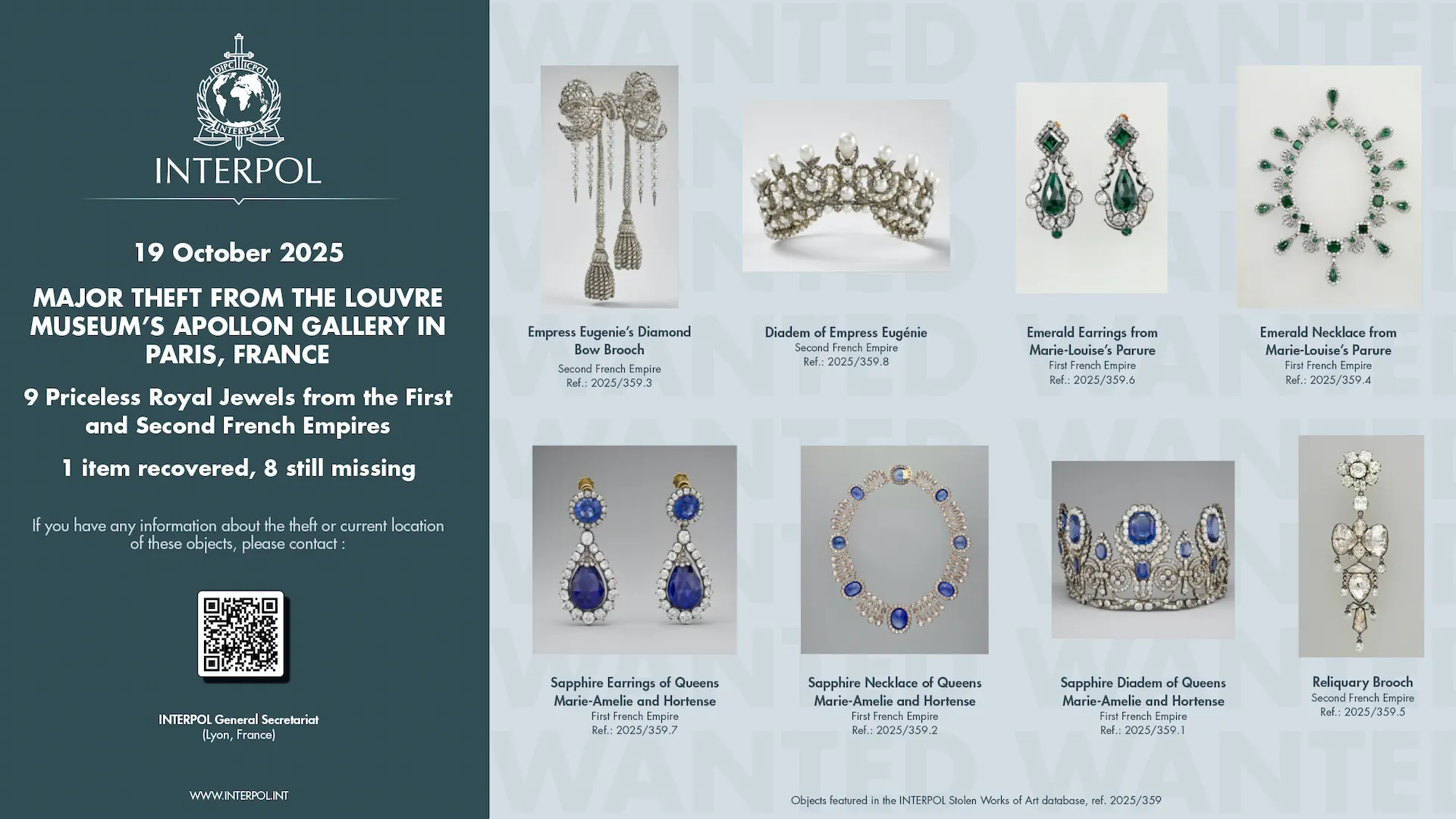
"Thompson and others say that this has become increasingly common with stolen jeweled and metal goods, noting that it's a way thieves can try to cover their tracks and make money. It's not like someone could publicly wear one of France's stolen Crown Jewels - and finding a market to sell the full artifacts would be incredibly difficult after "everyone and their sister" has seen photos of them over the last week, said Christopher Marinello, a lawyer and founder of Art Recovery International."
""By breaking them apart, they will hide their theft," Marinello said, adding that these items could become even more "traceless" if they're taken out of France and through jewel cutters and robust supply chains in other countries. Still, such pieces are often sold for a fraction of the value of what was stolen - due to their smaller size, but also because melting or breaking down"
Seven people have been arrested in the investigation of the Louvre heist, while the stolen royal jewels remain missing. The artifacts are valued at more than $100 million (88 million euros). Concerns exist that the jewels could be melted or broken into smaller parts, then resold as new jewelry items through ordinary jewelry stores or international cutting and supply chains. Breaking or melting would obscure provenance and make recovery difficult, and smaller pieces often sell for a fraction of the original value. A public legal plea urged return of the gems and warned that buying them would constitute concealment of stolen goods.
Read at Fast Company
Unable to calculate read time
Collection
[
|
...
]